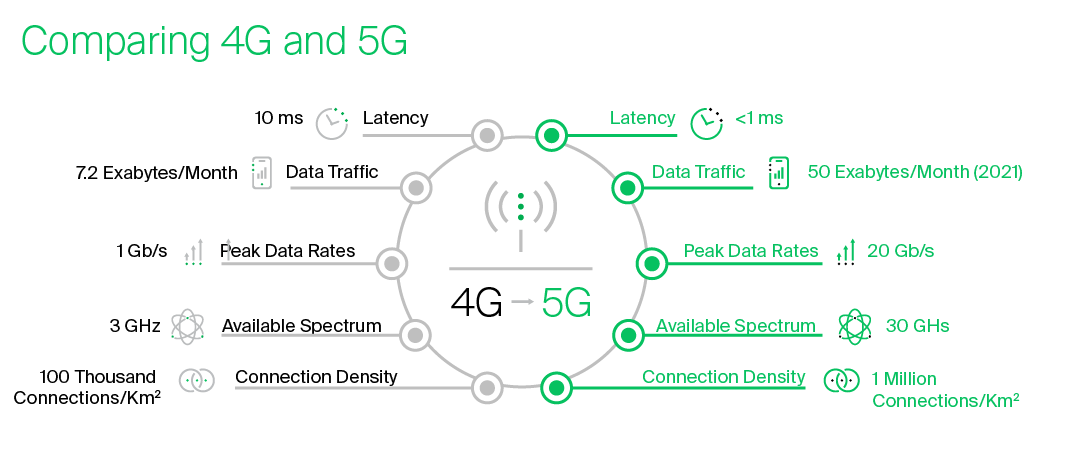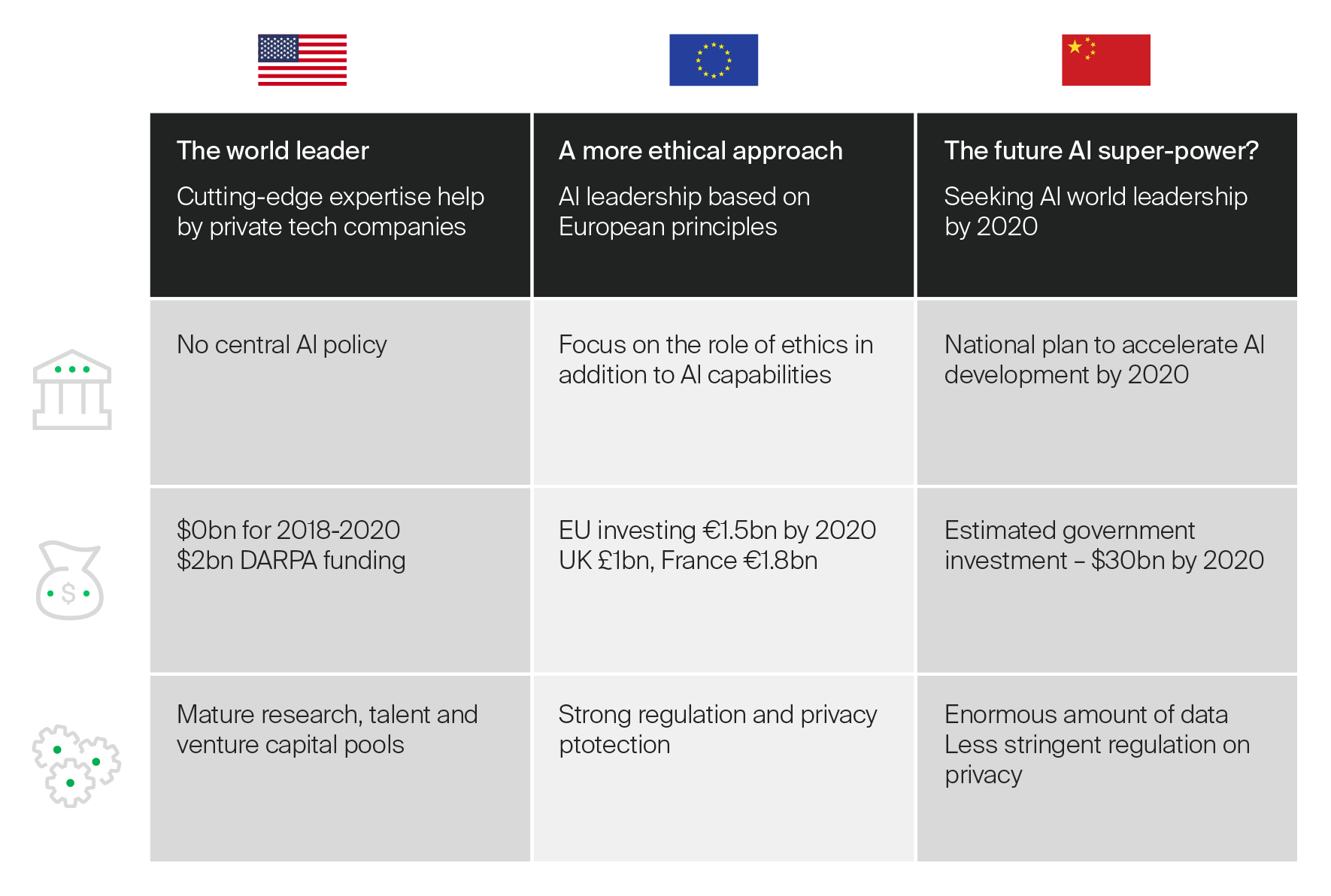What challenges and opportunities will face the world of mobile in 2019? The GSMA has recently released their latest study on worldwide issues surrounding the mobile industry. In it, they consider the latest developments in the global mobile market and emergent technology.
These reports take an overview of the past year and attempt to forecast future developments for the next few years. They contain a lot for those in the mobile industry to think about, and GMS has distilled some of the most important developments affecting operators in the coming year.
5G
With 4G expected to exceed half of all connections in 2019, many are already talking about 5G. The new communications standard focuses on high data rate, reduced latency, energy saving, cost reduction, higher system capacity, and massive device connectivity.
Key points:
- Many key markets launching 5G in 2019 — particularly in Europe, the Middle East, and the Asia Pacific — joining East Asia and the US.
- The first wave of 5G phones is expected to launch in Q2 2019.

Opportunities and challenges:
When most people think of 5G, they think of faster speeds and better connectivity. The GSMA seems to agree, arguing that consumer applications will be the focus of early 5G deployment. They believe that more distinctive capabilities, like low latency, will gain traction later — mostly as ways in which 5G facilitates the other noteworthy technologies examined below.
The GSMA highlights some questions over how valuable 5G will be, given the consumer perception is that it is “doing the same thing [as 4G], just better.” It may be harder to get consumers to explore new services enabled by 5G and thus derive value from it.
The primary challenge for 5G will be rollout: issues with signal range and penetration in some spectrum bands mean that ensuring coverage will be a challenge, necessitating an extensive network of small cells. The GSMA also highlights a lack of clarity in the costs associated with this rollout, not just in terms of infrastructure, but also how factors such as network flexibility and ownership will affect the cost dynamic.
The 5G spectrum itself is also a concern, and the GSMA recommends industry and regulators work together to ensure a proper allocation of the radio frequency spectrum. This is particularly pressing given 5G’s need for 80-100 MHz of contiguous spectrum in the mid-range and 1 GHz in the millimeter wave bands.
5G promises a range of improvements over previous standards, but what makes it most interesting might be the other technologies 5G connectivity enhances and enables.
IoT
The Internet of Things (IoT) is becoming a bigger part of daily life and, consequently, of a network’s sphere of concern. Covering applications like industrial automation, remote surgery, shipment tracking, and of course home appliances, the IoT offers a range of opportunities for networks willing to adapt to it.
Key points:
- Growth will be driven by a variety of factors, including smart homes, smart cities, and the drive for energy efficiency (from regulators and from within industries).
- Connectivity in the form of LTE-M and NB-IoT will be key, especially in edge computing applications; their role in 5G networks makes these areas complementary.
- Operators will need to adapt to make the most out of a new kind of global network.

Opportunities and challenges:
While the most publicly prominent uses of IoT technology are home assistants like Alexa or Google Home, or connected appliances (from refrigerators to doorbells and plenty in-between) the most growth between 2018 and 2025 (the projection range used by the GSMA) is in non-consumer applications.
Smart home technologies are definitely a major growth area — with 3.2 billion of the projected 16.1 billion new connections — but that market comes in second to smart building technology used in the commercial sectors. Networks need to be attentive to where the opportunities lie.
This is especially so because the GSMA cautions that, despite all these new connections, connectivity is not a guaranteed profit generator. In fact they think it will likely become commodified, actually shrinking in terms of percentage of IoT revenue, relative to the share taken by professional services (systems integration, consulting and messaging protection efforts) and IoT products (including applications, security, and analytics).
The GSMA, therefore, advises operators to diversify into service provision to advantage of what is, for now, an open field.
The obvious path is to start by providing connectivity, and then evolve into messaging protection. From there, operators can expand in a number of ways. They might specialise in one industry or attempt to offer a general IoT infrastructure service. They might present themselves as a prime contractor, or partner with specialists to offer a suite of services. IoT network/ecosystem orchestration, analytics, and security are all likely to be profitable fields.
AI
Companies are investing more into artificial intelligence (AI) as the list of potential applications grows. The expectation is that automation of some business functions and enhancement of others will drive productivity more generally (potentially adding $16 trillion to GDP by 2030). The GSMA notes that while the AI field is currently dominated by the major tech giants, other players — including governments and operators — are exploring the potential.
Key points:
- AI is set to expand from consumer-facing applications to supporting back-end operations.
- The two main areas involve improving the customer experience and enhancing network operations.
- Personalised and high-quality products/services are expected to increase demand; automated and augmented network operations will increase efficiency.

Opportunities and challenges:
Previously AI in the mobile sphere has meant chatbots, or digital assistants like Siri. However, as technology improves new uses are emerging. While a proper AI — one capable of assuming complex oversight and planning capabilities — is a long way off, there is a range of machine learning and analytics applications that could benefit operators.
The GSMA believes AI will drive “increasingly autonomous and intelligent networks” by handling lower-level operations on behalf of human personnel. It also offers enhanced analytic capabilities, improving an operator’s ability to plan and react to network changes.
AI will still have consumer-centric applications, of course. The ability to learn more about customer behavior offers the opportunity to improve the customer experience — through personalising and tailoring the user experience. Chatbots are already being improved and made more sophisticated, the better to handle simple customer support questions (which also decreases demand on call centers).
The GSMA notes that some operators are already experimenting with service applications associated with customer care, digital assistance, and smart devices, as well as network operations and planning.
The year Ahead
The GSMA has made some big predictions for the 5-6 years ahead, detailed in the full GSMA mobile report 2019. However, in order to be a part of that future, operators will have to act now. The technologies highlighted above present MNOs with exciting opportunities, which each operator will have to assess for themselves in order to determine which service and product options they are best placed to offer.

